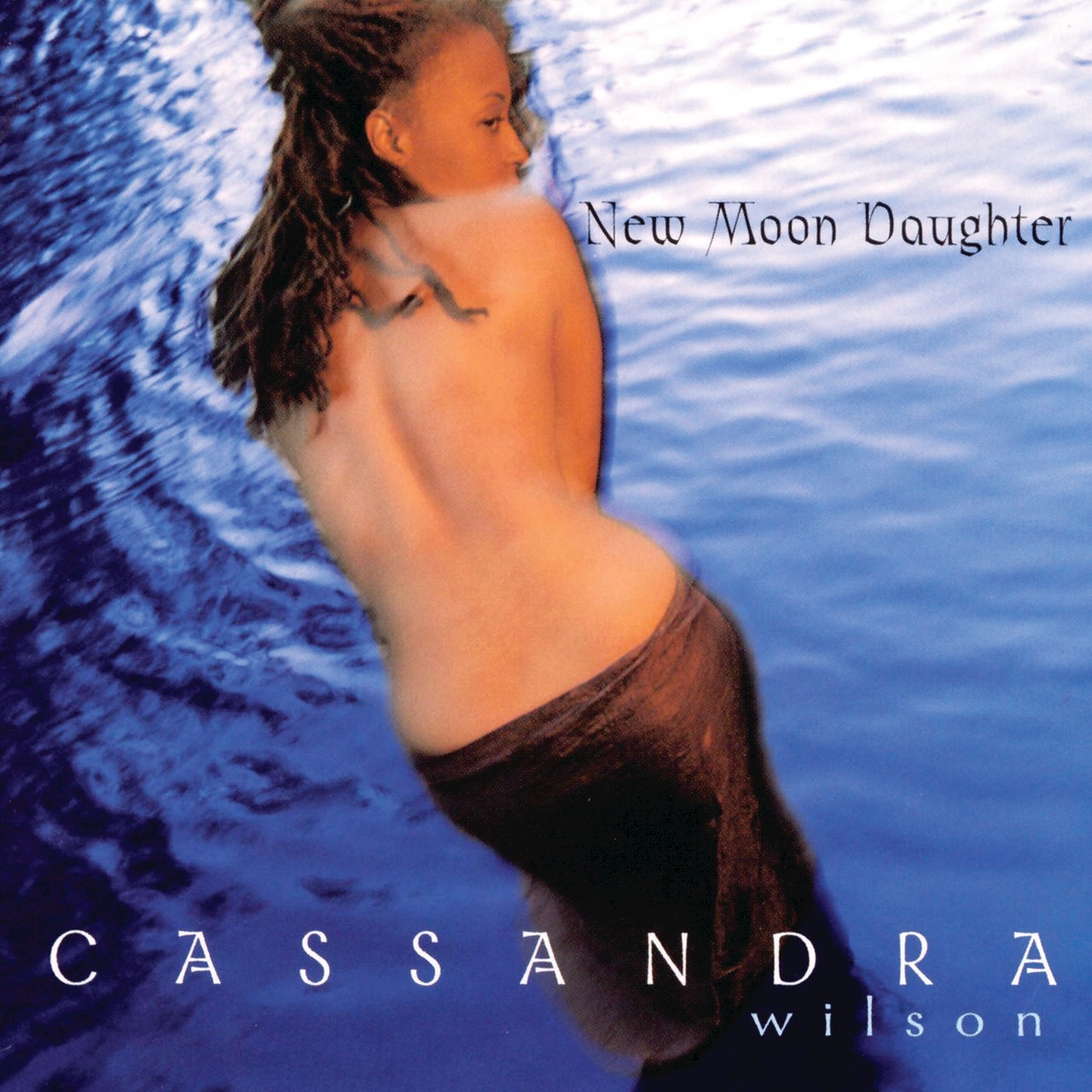Cassandra Wilson Destroys Artificial Musical Boundaries And Celebrates Good Tunes
From the archives: Michael Fremer reviews Cassandra Wilson's superb 'New Moon Daughter'
(This review originally appeared in Issue 7, Spring 1996.)
Joni Mitchell may have written “The Circle Game,” but it took Cassandra Wilson to grab pop by the throat and drag it around in one of the widest, deepest grooves of an unlikely circle you’ll ever hear, reconfiguring it as simmering, steamy jazz/blues. If you start this disc on the third track, “Solomon Sang”—a Wilson original—you might even be fooled into thinking it was Joni in her most recent smoky incarnation.
In context of the rest of the disc, though, I think you’ll agree that the similarity is superficial—a single facet of a remarkable vocalist in an audacious and eclectic setting. How big a musical globe does Wilson circumnavigate here? How about from “Strange Fruit”—Billie Holiday’s signature song about lynchings in the South which opens the disc—to the closer, Neil Young’s tender “Harvest Moon.”
In between, there are stops at the Boyce/Hart Monkees tune “Last Train To Clarksville,” Hank Williams’ mournful “I’m So Lonesome I Could Cry,” Son House’s “Death Letter,” U2’s “Love Is Blindness,” even Hoagy Carmichael’s “Skylark,” plus four Wilson originals.
Naysayers might say Wilson is indulging in commercial gimmickry covering The Monkees, or perhaps that she simply has bad taste, but that would really be missing the point of what’s going on here, which is an attempt, a successful one, at destroying artificial musical boundaries, and celebrating good tunes—which include the originals, by the way.
As the album title intimates, the songs are cast in dark, mysterious shrouds of new moon mystery, with what’s not expressed as important as what is. Singing much of the material in a low, sensuous register, Wilson is set against a dark backdrop out of which appear shimmering stringed instruments: tremulous acoustic guitars, pedal steel, electric, even a tenor banjo and bouzouki, acoustic bass, an occasional violin and upright bass.
The spare arrangements are augmented on some tracks by percussion, vibes, accordion and Hammond B-3, but mostly the guitar strings predominate and strong backbeats are few. How many guitar-dominated jazz vocal albums can you think of? Wilson’s take on “Strange Fruit” is bitter and stark as it should be, backed by angry slap bass, barbed wire “resophonic” guitar (courtesy Chris Whitley) and a solo coronet bearing witness to atrocity.
While much of the material is melancholic in a strangely beautiful way, there is also an upbeat and oh so sensuous bossa nova (“A Little Warm Death”), and the disc ends with Young’s love vow. Wilson turns “Last Train To Clarksville” from an innocent bouncy ditty to a sexy come-on which had me thinking if I missed the train I’d walk… or crawl.
So of course that's a great segway to say this is one disc you’d be wise to walk or crawl to your local digital emporium to buy, because not only is the genre bending music intoxicating, so is the production and sound, engineered and produced by the same team that gave us audiofools the Holly Cole Trio heebie jeebies. In fact, had I room and time, I’d review the Holly Cole Trio’s recent Temptation album (Metro Blue 31653 2) which would also garner top marks for both music and sound.
This all analog recording and mix is rich on all counts and would garner a 10 except for excessive sibilant smear and a constant bit of edge to Wilson’s voice at the very top, which may actually be the sound of her voice because the overall tonality is similar on her other CDs. A more liquid, smoother, rounder vocal would have taken this production to the sonic pinnacle, but would it be an accurate presentation? I don't know.
Otherwise, the production is very liquid and tubey sounding with plenty of air around three dimensionally presented images. If you don’t think you can sink into a CD, try this. Actually try crawling out ‘cause you’re going down! Someone should do this on vinyl and soon.
If you’ve already bought this disc and your sonic take on it doesn’t square with mine in that you find Wilson’s voice really hard and bright and the soundstage flatter and less inviting than I say it is, check your disc. If it says “Mastered by EMI MFG.,” we’re both correct.
Unfortunately the early pressings by EMI sound far inferior to the later Sanyo ones, and neither sound as good as the CD-R I got from Street and Masterdisk’s Greg Calbi. When Street heard the EMI pressing he was, how shall I say it, disappointed? Unfortunately some copies went into distribution. Chances are if you buy the disc now, you’ll get a Sanyo version. This is one CD I’d buy at a big store with fast turnover.
Why the difference? Well for one thing the orthodoxy that “bits are bits” is simply not so based on listening. I realize this upsets the techno-dweebs who listen via slide rule or computer, or whatever they’re calculating with these days, but those of us and those in the mastering suites around the world who listen with their ears are finding otherwise.
In this case something happened between the time the 1630 master reached EMI and the first pressing. As I write this, no one has a firm answer here, but elsewhere stories abound of numerous digital to digital copies being made before pressing, of transfers to the 8mm-based computer backup system called “xabite” which allows cutting glass masters at double speed, and of deeper and shallower pit depth and substrate thicknesses causing audible differences not explainable by theory.
The Tracking Angle is committed to getting the lowdown on this for you as information becomes available from open minded industry leaders. In the meantime I think you’ll find the sound on the Sanyo version of this disc as I described it.











































